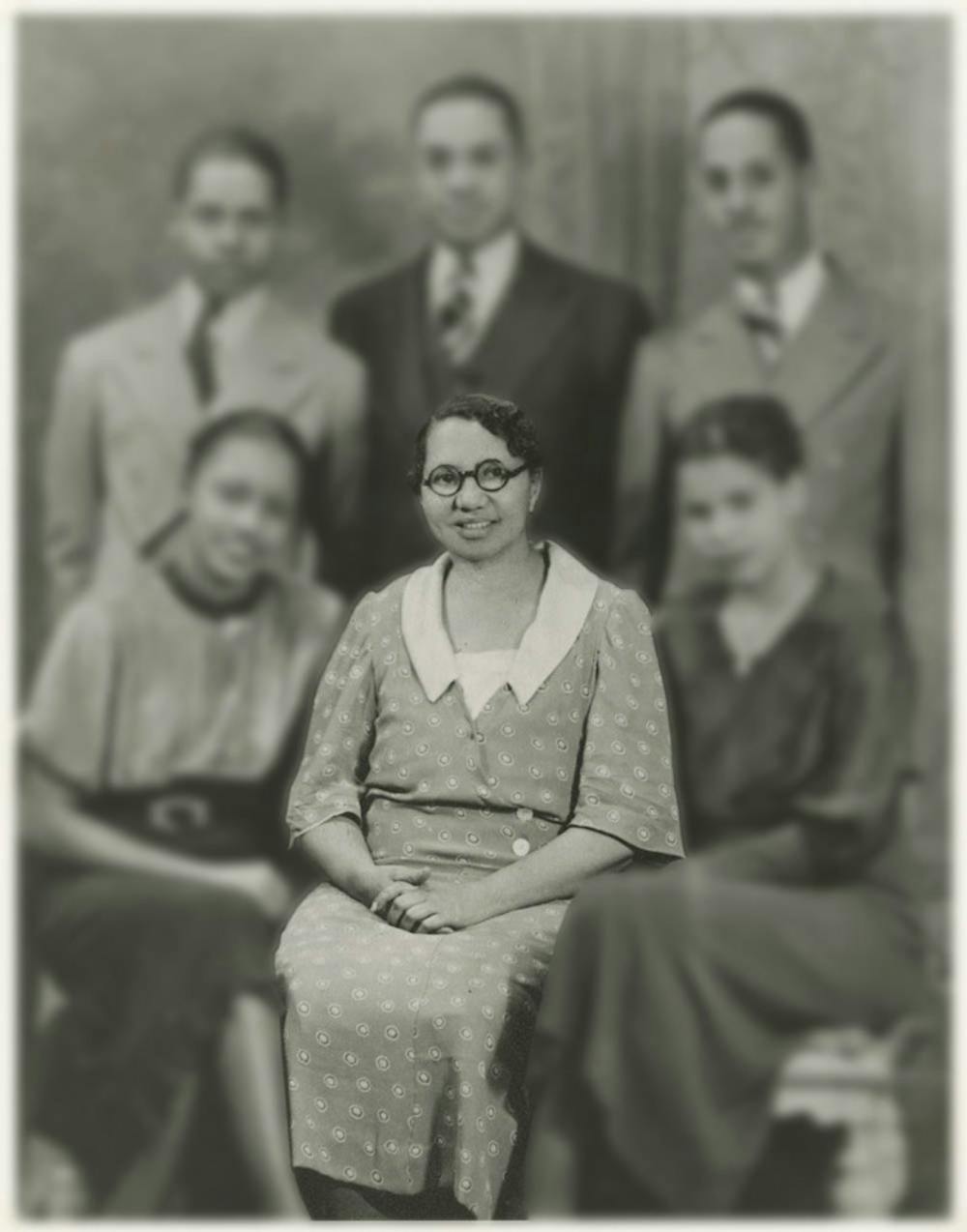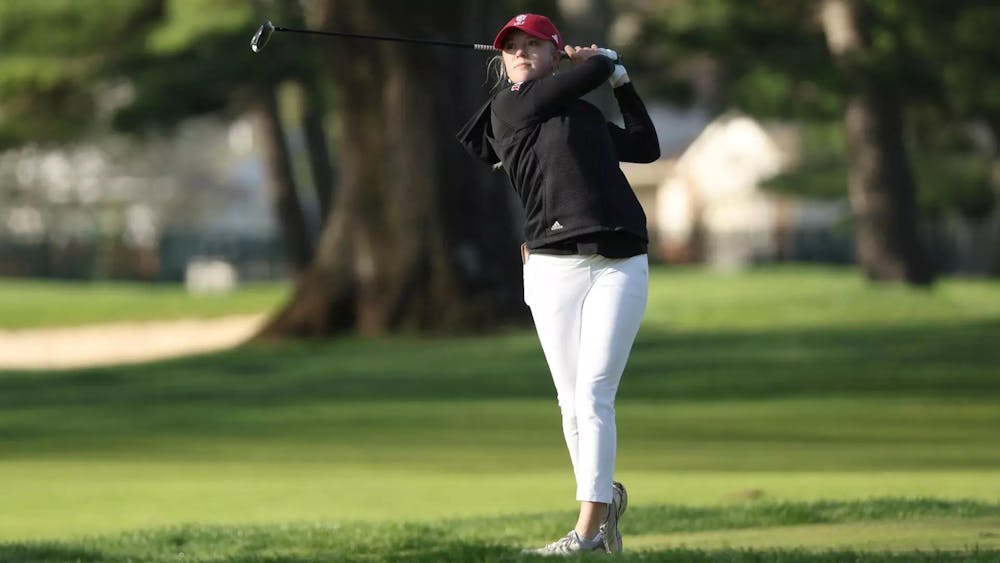While researching for a book she was co-authoring, Kellams began searching through 19th-century newspaper clippings in IU Libraries’ Newspaper Archive during the summer. However, what she ended up finding was bigger than her book — it was a new piece of IU’s history.
Kellams had stumbled upon the article that identified Carrie Parker as the first black woman to attend IU but not regarding the history behind the name.
Through Kellams’ search, she discovered Parker began classes in January 1898 and attended through the end of that calendar year.
Parker was the first black woman to attend IU, but she was not the first to graduate. While in Bloomington, she worked to afford the cost of living, putting in unpaid hours for the family she lived with. But the pressure of balancing work and school became too great for Parker to continue in her studies.
Kellams was eventually able to track the story down to Parker’s family in Niles, Michigan. She spoke with Parker’s only living son, 99-year-old Leon Taylor, who was excited and astounded that Kellams had found him, she said.
Leon then told Kellams what he knew about Parker’s full history.
Parker was born in North Carolina but moved to Clinton, Indiana, early in her childhood. Growing up, Parker experienced racism firsthand.
She had the most trouble in elementary school and at her church. Parker wrote an autobiographical sketch entitled “Race Prejudice and Me” in the 1940s. She described a time she and her sisters were not allowed to stay at a Sunday school party because of their race.
“Even now I can see us three little girls stumbling home through the darkness and cold,” she wrote.
In her elementary school, the principal had a policy that no African-Americans would pass into high school, Kellams said.
Parker attempted to graduate three years in a row. The first two attempts each came with a new excuse from the principal.
“They have bluffed every colored child out of this school, but they are not going to bluff me,” Parker wrote. “I’m going through this school or die trying.”
On her third attempt, Parker finally passed and graduated as the head of her class with support from most citizens of the town. She wrote that citizens said “the school had better not interfere with my graduation that year.”
She then graduated from Clinton High School in 1897 and became the first black woman to graduate from any Vermillion County school.
Although she never let her race stop her, Parker used these battles to help her later on in life, Leon said.
“It made her more forceful in doing what she wanted to do,” Leon said. “She didn’t back down from what she thought was the right thing to do.”
She used this state of mind when deciding what to do after high school. The superintendent of Parker’s high school wrote a letter to then-IU President Joseph Swain expressing Parker’s interest in attending IU. Swain wrote back and said the University would be glad to have her.
Although she would have to work while in school, Parker was up for the challenge to finish her education.
Parker stayed with English professor Elmer Griffith and his wife. However, this proved to be too much for Parker. The family piled loads of chores on top of her schoolwork and job, Kellams said.
This stress broke her down, eventually causing a doctor to forbid her from working while in school. However, local newspapers reported she quit school due to “nerve trouble.”
Parker then decided she would teach for a few years to save money to return to school.
At the time, she was engaged to John Taylor, whom she met at IU. Although Parker did not want to get married until she finished her education, John promised Parker he would pay for her education if she married him right away. Parker agreed with hopes of finishing her education after they married.
“I married but have never even seen the University since,” Parker wrote.
John never kept his promise.
“I wonder what she would’ve done had she had the education,” Leon said. “She was a powerful woman as it was ... I can’t imagine how far she would’ve gone.”
She was disappointed about not finishing school, but she stressed that her children get an education and go to college, Leon said.
As it turned out, only one of her children — Leon’s eldest brother — received a college education.
“The rest of us never could afford it, but we had a wonderful life,” Leon said.
Throughout her search Kellams used many IU resources when uncovering Parker’s life.
Since neither Kellams nor her colleagues had ever heard this name before, and it was not mentioned in any of IU’s reference collections, Kellams decided to contact the Registrar’s Office.
“I started to do some digging to learn as much as I possibly could about her,” Kellams said.
She began by forming a family tree. However, she wanted to learn more about Parker — why she came to IU and why she left.
“What was her story?” Kellams recalled asking herself. “Did her family know that she had attended Indiana University?”
After an initial two-week-long search, Kellams finally decided it was time to take a break. She posted all of her findings to the library’s departmental blog. She told readers she had thrown in the towel but asked for their help in her search by requesting more information about Parker and her family.
As soon as she posted her blog, Kellams’ discovery prompted publicity from radio shows, IU web sites and the Bloomington Herald-Times.
From there, numerous people came forward with different resources Kellams could use, which allowed her to look even further into Parker’s life.
“So, just getting those new little tidbits of information made me want to continue to dig a little more and see what I could find out,” Kellams said.
After hearing the news about Parker, the IU Alumni Association decided to invite Parker’s family to this year’s homecoming festivities.
Forty family members came, ranging from 7 months to 99 years-of-age, with only one of Parker’s children not present.
“The grandchildren were inspired by their parents because they had talked about her and everything,” Leon said. “They were thrilled to have been there.”
In October, the Office of the Vice President for Diversity, Equity and Multicultural Affairs announced a scholarship in Parker’s name.
The scholarship will help sophomores, juniors and seniors who demonstrate financial need and are involved in the 21st Century, Groups, or Hudson and Holland scholars programs. There will be a preference to first-generation students.
It is sponsored by a $30,000 endowment by James Wimbush, dean of the University Graduate School, and a multi-donor scholarship, a fund where anyone can donate. The funds will be available in five years.
“Vice President Wimbush actually put the money up himself because he knows how difficult it was to get to school,” Kellams said. “That is probably the biggest piece that has been so amazing in all of this.”
A previous version of this article stated that Carrie Parker attended IU in 1889. The IDS regrets this error.






